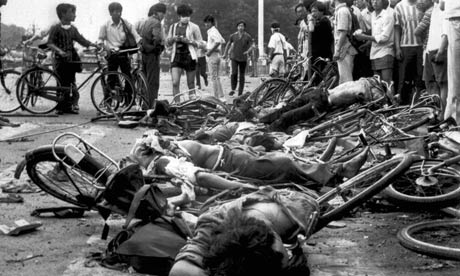The amnesia to which China has succumbed is not the result of natural memory-loss but of state-enforced erasure. China’s Communist regime tolerates no mention of the massacre. But Tiananmen Square, and other sites connected with the events of 1989, still remain charged with memory. When the written and spoken word is censored, the urban landscape becomes a nation’s only physical link to the past.
I left Beijing in 1987, shortly before my books were banned there, but have returned continually. In 1989, I was on Tiananmen Square with the students, living in their makeshift tents and joining their jubilant singing of the Internationale. In the two decades since, each time that I have gone back, visions from those days seem to return with increasing persistence.
During the Beijing Olympics last August, I took my now five-year-old son to the square. On our journey there, our movements were observed by the CCTV cameras in the lift of our apartment block and outside the front gate of our compound, by the listening devices in our taxi, by the armed police who lined the streets and by the security guards who frisked us before finally allowing us on to Tiananmen. We emerged from the underpass and stepped on to the square. Apart from the crowds of policemen, the plain-clothes officers (instantly identifiable by their dark sunglasses and striped Airtex shirts) and the gaudy flower displays, the concrete-paved square, the size of nine football fields, was almost deserted.
In spring 1989, the square had been taken over by Beijing students and civilians who were mounting the largest peaceful protest in history. They were pressing for dialogue with their Communist leaders, and ultimately for freedom and democracy. The packed square became the city’s pulsing heart; the police had vanished. This was a benevolent form of anarchy – noble, joyous, and surprisingly orderly.








